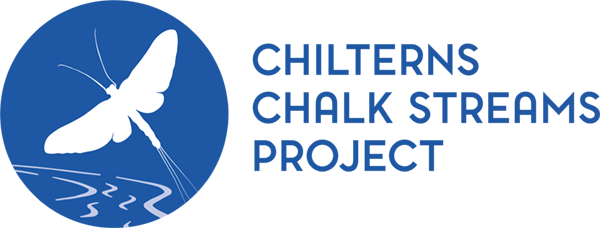
Invasive Plants impacting Chilterns Streams
Invasive non-native species can outcompete native plants, harming wildlife and the environment, and can even impact on our health. Throughout the Chilterns globally rare chalk streams are being negatively affected by these plants. Please help us fight back
Learn more
To increase awareness of the problem the Chilterns Chalk Streams Project has recently published a leaflet explaining how to recognise, report and treat the three most problematic plants for local rivers – Japanese knotweed, Giant hogweed and Himalayan balsam.
The leaflet also explains the law around these species. Did you know it is an offence to plant or otherwise cause listed invasive species to grow in the wild? If invasive species spread to the wild or to a neighbour’s property then landowners may be liable.
Finally the leaflet sets out what all river visitors can do to prevent the spread of these plants. Every year volunteers from local river and conservation groups collectively spend hundreds of hours removing and treating invasive plants for the good of local rivers and wildlife. Please follow the tips below to help us stop the spread of invasive plants.

Stop the Spread: Check, Clean, Dry
Invasive species can be small and hard to spot so are easily spread on damp equipment and clothing. You can help protect the environment and activities you enjoy by keeping your kit free of invasive plants and animals, whether you’re a riverside walker, angler, paddler or boater remember to:
Check your equipment, and clothing after leaving the water for mud, aquatic animals or plant material. Remove anything you find and leave it at the site.
Clean everything thoroughly as soon as you can, paying attention to areas that are damp or hard to access. Use hot water if possible.
Dry everything for as long as you can before using elsewhere as some invasive plants and animals can survive for over two weeks in damp conditions
Rogue's Gallery
Japanese knotweed
Knotweed can quickly dominate an area, wiping out the natural vegetation. It can cause structural damage and reduce land values.
Knotweed mainly reproduces from its stems and rhizomes – a fragment smaller than a penny can produce a new plant. It can survive drying and composting to produce new plants. Knotweed is easily spread via rivers and by moving soil contaminated with knotweed material

Himalayan Balsam
Himalayan balsam forms dense stands that outcompete native plants. Plants die back in autumn, leaving riverbanks bare and easily eroded.
One plant can produce 2,500 seeds – the explosive seed pods can throw the seeds over 6 metres. Seeds are transported by rivers causing new stands downstream

Himalayan Balsam
Giant Hogweed
Giant hogweed presents a risk to local habitats by outcompeting native plants. It also presents a risk to human health – all parts of the plant, including the hairs on stems and leaves contain toxic sap which can cause severe skin blistering.
It spreads by seeds only and is easy to identify when fully grown by its size – it can grow up to 5m tall!

